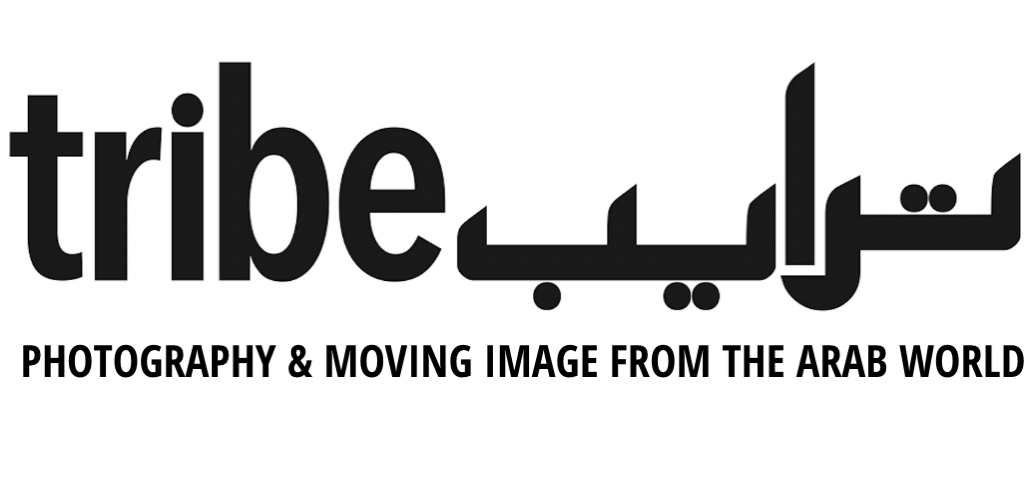Zied Ben Romdhane: Witness
Bursts of Life and Laughter
Zied Ben Romdhane, Chattessalam, a boy playing with a fridge behind the chemical manufactory (2014). Courtesy of the artist.
With text by Flounder Lee, artist, educator and curator.
Documentary and street photography overlap and intertwine in ideas and subjects but somehow still stay distinctly separate in most photographers’ work. Tunisian photographer Zied Ben Romdhane manages to combine them in fascinating ways. West of Life and other projects deal with deadly serious topics such as mining and desertification–documentary at its finest–but still manage the bursts of candidness and humor that are the bread and butter of street photography. It is hard to imagine any work by Sebastião Salgado, whose projects cover some similar topics as Romdhane’s, such as mining, to be funny. Conversely, work by celebrated street photographers such as Vivian Maier rarely has the depth to cross over into documentary. Of course, there are rare exceptions who balance humor with documentary, such as Robert Frank. Romdhane’s work combines these two genres in a spectacular way that keeps rewarding the viewer for spending more time with the images. There are moments that would happily reside in other photographic traditions such as still life, portraiture, and abstraction. This genre mixing makes sense given his wide-ranging influences such as Haruki Murakami, Martin Parr, and Todd Hido.
Romdhane’s most celebrated series is West of Life. The project examines a nearly uninhabitable region, Gafsa, an important phosphate mining area. This project perfectly conveys the mix of humor and depth that pervades much of his recent work. In one photograph, with a serious look on her face, an older lady, Zayda, stands against a weatherworn wall and strikes her best body builder pose. In another, a boy paddles a refrigerator through a reedy area, the background, though, is a chemical plant, making the scene less playful and more wary. Romdhane describes one encounter: “While I was shooting West of Life, a kid jumped in front of me wanting me to take him a photo. So, I said, ‘Yes, of course.’ He disappeared for a while then he came back wearing a cardboard armor and a big smile in his face. I found this very funny and creative in the same time.”
These comic moments, however, are contrasted with photographs of a much darker nature. Degraded and eroded landscapes are seen throughout the series. People, as well as the places, seem a bit broken, a bit worn. Life here doesn’t look easy, but it isn’t all sad; the bursts of happiness keep the series from weighing so heavily that you can’t bear to look at it. Romdhane makes sure that the people are not seen as victims, that they are still living their life, just with the desire to have more control over their future.1
Balancing these two sides of reality was something that took Romdhane awhile to accomplish, but it is the keystone in the work. He says, “Despite the harsh conditions in that region I was surprised about the energy and the sense of humor that people have there. The contradiction strengthened the story telling. To be able to catch those funny moments with strangers took me a long period of coming and going to establish relationships based on trust.”
In two of Romdhane’s in-progress projects, The Box and Under the Sand, this unique mix of humor and serious topics continues. The Box deals with a prestigious company in a hip area of Tunis. On the surface, it seems ideal, with moments of laughter, but disillusionment and detachment from the outside world crop up when you look closer. Under the Sand tackles the desertification and encroaching sand on villages in southern Tunisia. Here, though, the moments so far in the work contain more muted humor than West of Life. Someone reaches for a water spigot that protrudes from the face of a sand dune, the tiny pool of water underneath proof that the water still flows, evidence this is a recent sand incursion. The drama is amped up with scenes such as a dune that dwarfs a village. Still Romdhane makes sure that the bursts of life prevail with another photo showing kids riding their bikes on a tall dune.
While black and white was not really a choice for much of photography’s history, now it definitely is. Romdhane makes use of monochrome throughout his work to reduce visual “noise”. Despite being monochrome, the work shows a colorful world, filled with life and laughter. In a photographic tradition, he’s using the lack of color to help us break from reality to look back at it in a new light. This line of reasoning goes well back; Ansel Adams thought that “the two- dimensional, monotone nature of a black and white photographic image was in itself a radical departure from reality”.2
Overall, Zied Ben Romdhane’s work is a vivid portrayal of life, full of humor, pain, laughter, hardship. He engages topics that affect his country, Tunisia, on the macro and micro scale such as environmental degradation and employment. He mixes multiple genres of photography to tell a more complete story. One where the subjects are not victims to be pitied, but people who simply want more control over their own destiny and future.


